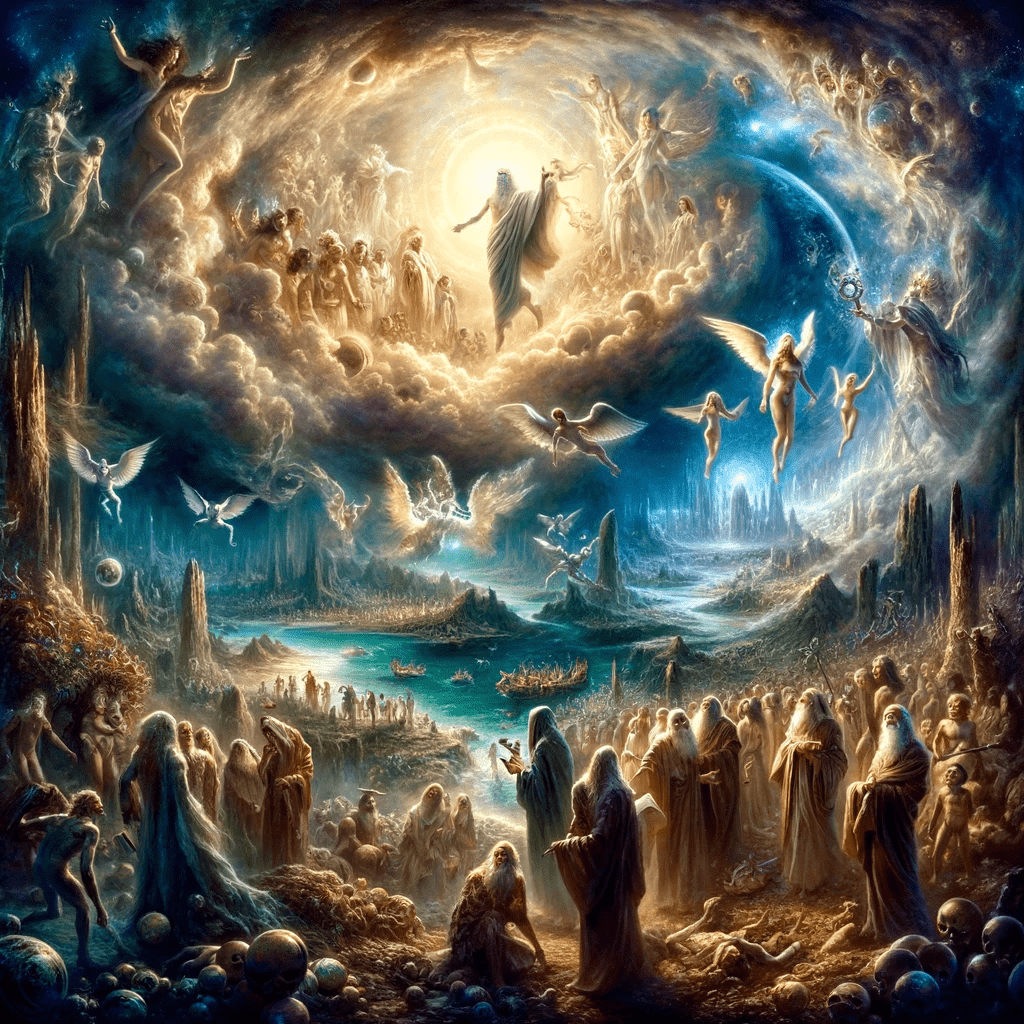The Book of Enoch

The Book of Enoch, a text of ancient origins, carries within its pages an intricate fabric of stories and teachings that have intrigued scholars, theologians, and enthusiasts for centuries. Although not formally included in the canonical scriptures of most major Christian denominations, it holds a unique position in the lore of ancient texts and has found a particularly resonant audience among those who look into the mysteries of UFOs and extraterrestrial life.
The term “canonical scriptures” refers to the collection of books that a particular religious group considers to be authoritative and inspired by God, forming the official scripture or “canon” of that religion. In the context of “most major Christian denominations,” this refers to the set of books that are universally accepted across different branches of Christianity — such as Roman Catholicism, Eastern Orthodoxy, Protestantism, and others — as making up the Bible.
At its core, the Book of Enoch is a narrative anchored in the figure of Enoch, the great-grandfather of Noah, who is taken on an extraordinary journey into the heavens. Enoch’s experiences, as detailed in the text, are a rich source for interpretations of celestial encounters and divine revelations. Modern ufologists have drawn parallels between Enoch’s ascension, described as being whisked away in a fiery chariot pulled by fiery horses, and contemporary accounts of alien abductions.
In the genealogy provided in the Book of Genesis, Enoch was the son of Jared, the father of Methuselah, and the great-grandfather of Noah. The Bible does not provide the name of Enoch’s wife, and she is not mentioned in the texts. The only child of Enoch named in the Scriptures is Methuselah, who is noted for having the longest lifespan of all the figures mentioned in the Bible. However, it is likely that Enoch had other children, as Genesis 5:22 mentions that he had “other sons and daughters.”
Enoch was the great-grandfather of Noah. Here is the genealogical connection between Enoch and Noah according to the Book of Genesis in the Bible:
- Enoch was the son of Jared (Genesis 5:18).
- Enoch was the father of Methuselah (Genesis 5:21).
- Methuselah was the father of Lamech (Genesis 5:25).
- Lamech was the father of Noah (Genesis 5:28-29).
So, the line of descent goes like this: Jared → Enoch → Methuselah → Lamech → Noah.
Noah’s parents were Lamech and a woman whose name is not given in the biblical texts. Lamech speaks prophetically about his son Noah, suggesting that Noah would bring relief from the curse of laboring on the ground which had been cursed by God after Adam and Eve’s expulsion from the Garden of Eden.
The Book of Enoch is segmented into several parts, with the “Book of the Watchers” (1 Enoch 1–36) being particularly significant. It relates the tale of the Watchers, a group of angels who descended to Earth, violating divine edicts by imparting forbidden knowledge and mating with human women. This union gave rise to the Nephilim, a race of giants whose existence led to chaos and corruption on Earth, eventually culminating in the Great Flood—a narrative echoed across various mythologies and ancient texts.
The Watchers are said to have taught humanity arts and sciences—topics that would be considered advanced knowledge or ‘technology’ by ancient standards. This dissemination of knowledge is a theme that reverberates with modern tales of extraterrestrial encounters where advanced beings impart wisdom or warnings to humanity. The Book of Enoch’s accounts provide a precedent for the concept of higher beings influencing human progress, which resonates with some theories in the UFO community about alien interventions in human history.
Some researchers suggest that the antediluvian world described in the Book of Enoch may be linked to the fabled “Golden Age” of Atlantis, referring to a time before the Great Flood when civilizations were purported to be at their zenith, possibly with the aid of advanced technology or knowledge from celestial beings. This age is said to have ended with a great deluge, which some connect with the Flood described in various ancient texts, including those of Plato.
Connections have also been drawn between biblical accounts of angelic interactions and modern UFO phenomena, suggesting a continuous thread of celestial visitations throughout human history. Since the modern UFO era is often dated to Kenneth Arnold’s sighting in 1947 or earlier, the relationship between historical angelic encounters and UFO sightings has become an area of interest, positing that what ancient texts describe as divine or angelic visits may be early records of what we now term as UFOs.
The narrative of the Book of Enoch, with its rich descriptions of otherworldly realms and beings, continues to inspire interpretation and debate. While its direct mention of UFOs as understood in contemporary terms is absent, the thematic links are strong and have been a foundation for alternative historical theories that seek to explain human history through the lens of extraterrestrial influence and interaction.
There are, in fact, three books attributed to Enoch. The first, often simply called the Book of Enoch, deals with the fall of the Watchers, angels who fathered the Nephilim by taking human wives. The second book, known as 2 Enoch, and the third, 3 Enoch, are distinct works with different focuses. 1 Enoch is the most well-known and is composed of several sections, with the oldest estimated to date from around 300–200 BC, and the latest around 100 BC.
The Bible does reference Enoch in a few places, notably in Genesis 5, where it describes his lineage and his being taken by God, implying that he did not die a normal death. Additionally, a short section of 1 Enoch (1:9) is cited in the New Testament, in the Epistle of Jude.
Within certain circles, including some UFO enthusiasts and theorists, intriguing connections have been drawn between specific passages in the Book of Enoch, particularly in the Book of Watchers, and the modern fascination with UFO phenomena.



